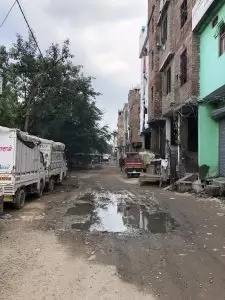Water scarcity is plaguing one of the world’s largest cities, home to some 26 million people. A new project is trying to change that.
The Australia-India Water Security Initiative (AIWASI) project is aimed at strengthening city-level water governance with a $10 million direct investment in blue-green ‘living’ infrastructure that addresses climate change-related challenges, urban heat, water security, flooding, and environmental pollution.
Promoting regeneration of urban environments through nature-based solutions (NBS) and water sensitive urban design (WSUD), it brings together key expertise from multidisciplinary design firms of Australia and India.
Owen Richards, Engineers Australia fellow and Global Environment Leader at interdisciplinary design firm McGregor Coxall, told create the project is an opportunity to share Australian practical experience when it comes to developing water sensitive cities.
“We’re exporting a lot of expertise over to these cities that really need our help and guidance,” he said.
“At the same time, we’re hoping that we can show councils here in Australia what they can start to plan for, and how we can manage risks now by implementing a lot of these initiatives here at home. We’re a young country, and the idea is that we shouldn’t have to face the problems in the future that India is facing presently.”
The project is in its initial phase, with Richards leading a team to establish bespoke water management and sanitation frameworks based on two pilot communities in New Delhi across a four-year design and implementation cycle.
Richards’ background is in engineering solutions for sustainable stormwater, including participating in China’s ‘sponge city’ program, and looking at how biomimicry can mitigate some climate change drivers.
“We can’t look at cookie cutter solutions, or apply the same ideas everywhere in need,” Richards said.
“We have to assess each environment in its own unique way, taking into account its own environmental characteristics and certain community characteristics and values, and then ask ourselves ‘what’s fit for purpose and what’s appropriate for this landscape.”

Climate change challenges
Richards said that the engineers working on the project have to come to terms with the sheer magnitude and scale of climate change drivers in mega-cities.
“In India, the surface is so encrusted that wherever it rains, all of the stormwater is reflected,” he said. “You face water security risks straight away, because that groundwater under urban environments is depleted — and India relies on groundwater for their normal water supply, including drinking water.
“We’re also seeing flash flooding, which causes enormous death and destruction because water simply doesn’t store in the environment. On top of that, it’s really hot — thanks in part to the urban heat island effect.
“Peri urban landscapes that support the city’s food supply have greatly deteriorated. Sediment pollution is rife, characterised by microplastics in the rivers, landfill contamination in run-off, and a dry water supply.
“Parks and open spaces that do exist within these catchments become flooded, inundated with water and pollution and therefore unusable and unsafe.”
Richards believes that this kind of work calls for not only science, but creative thinking.
“Some of the things I’m looking at include how do we decentralise some of these processes? How do we put nature based solutions into environments which are so tightly populated and dense?
“Much of the project work will centre on source control stormwater management — no matter how small of an area. We are trying to mitigate as much of that conventional urban water cycle wherever we can, whenever we can,” he said.
“It’s easier to mitigate risk by decentralising management infrastructure into smaller sections, finer scales. This distributes the management, costs, and risks across the entire catchment rather than centralising it at the end of the line. The key is that you take the water off the ground as soon as practical, and do whatever you can based on local constraints and environmental conditions.
“Over time these accumulate, and generate more healthy microclimates and environmental conditions.”
Pioneering ideas
The project is still in its early days, compiling GIS and spatial data assessments of the entire New Delhi region from in excess of 700 sites.
Richards said that the next phase is putting in place two demonstration sites — one dense urban location, and one more peri-urban area.
“Bespoke solutions will be responsive to the region’s current environmental characteristics, restoring ecosystems and promoting access to healthy waterways through natural intervention. Proven success with Living Infrastructure solutions will allow us to create a framework that is applicable to scalable communities in need, globally.”
Richards added that the AIWASI program is heavily focused on practical outcomes using progressive water management techniques.
“From my experience in big engineering firms, the challenge is getting nature-based solutions up and going successfully,” he said.
“You can’t work in a silo. You need multi-disciplinary collaboration from the get-go. India has great engineers and landscape architects, and we look forward to prosperous outcomes for New Delhi’s communities through cross-cultural, interdisciplinary partnerships.”